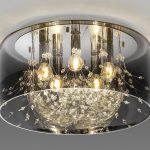Network switches are an essential part of any business’s IT infrastructure. They allow for the connection of multiple computers and devices to one network, allowing for communication between them. Without a network switch, it would be impossible for devices such as phones, printers, or computers to connect with each other. When it comes to purchasing a network switch, there are many factors to consider. In this blog post, we will explore what you should look for and what to avoid when purchasing a network switch. We’ll also look at how different types of network switches can benefit your business and provide tips on how to choose the best one for your needs.
What is a network switch?
A network switch is a hardware device that connects computers and other devices on a local area network (LAN). Switches allow devices on the same LAN to communicate with each other by providing a path for the exchange of data. A switch typically has multiple ports, each of which can be connected to a separate device. When a switch receives data from a device connected to one of its ports, it determines which port the data should be sent to based on the destination address in the data packet. This allows the data to be sent only to the intended destination, rather than being broadcast to all devices on the LAN.
Different types of network switches
The most common type of switch is the Ethernet switch. These switches are used to connect devices on a local area network (LAN). Ethernet switches can be either unmanaged or managed. Unmanaged switches are easier to set up and use, but they offer limited control and features. Managed switches offer more control and features, but they require more setup and configuration.
The next most common type of switch is the Fibre Channel switch. Fibre Channel switches are used to connect devices on a storage area network (SAN). SANs are typically used by businesses that need to store large amounts of data. Fibre Channel switches offer high performance and reliability, but they can be difficult to set up and configure.
Another common type of switch is the Token Ring switch. Token Ring switches are used to connect devices on a token ring network. Token ring networks were once popular, but they have been largely replaced by Ethernet networks. Token Ring switches can be difficult to find and may not work with newer equipment.
Finally, there are also WAN switches. WAN switches are used to connect devices on a wide area network (WAN). WANs are often used by businesses that need to connect multiple locations. WAN switches can be either managed or unmanaged, but they tend to be more expensive than other types of switches.
What to look for when purchasing a network switch
When purchasing a network switch, there are several factors to consider. Below are some key points to look for:
-Ease of use and management: Look for a switch that is easy to set up and manage. Many switches come with software that makes managing the switch simple.
-Flexibility: Choose a switch that offers features that can be added or removed as needed. This allows you to customize the switch to meet your specific needs.
-Performance: Make sure the switch can handle the amount of traffic you expect. Test the switch with different types of traffic to ensure it can meet your needs.
-Reliability: Choose a switch that is reliable and backed by a good warranty. This ensures that you will be able to rely on the switch for years to come.
What to avoid when purchasing a network switch
When it comes to purchasing a network switch, there are a few things you’ll want to avoid in order to ensure you’re getting the best possible product for your needs. Here are a few of the most common mistakes people make when choosing a switch:
- Not Considering Their Network’s Requirements: One of the most important things to consider when purchasing a network switch is your network’s specific requirements. What kind of traffic will be going through the switch? How many devices will be connected to it? Answering these questions will help you narrow down your choices and find the best switch for your needs.
- opting for the Cheapest Option: While it’s important to find a switch that fits within your budget, opting for the cheapest option isn’t always the best idea. In many cases, cheaper switches don’t offer the same features and quality as more expensive options, which can end up costing you more in the long run. It’s important to strike a balance between price and quality when choosing a switch.
- Not Checking Compatibility: Another mistake people often make when choosing a network switch is not checking compatibility with their existing equipment. If you have an older router or other devices on your network, be sure to check that they’re compatible with the switch you’re considering before making your purchase. Otherwise, you may end up having to replace other equipment as well, which can end up being quite costly.
Conclusion
Purchasing a network switch can be an intimidating process, but with the right knowledge you can make sure that you’re getting the best one for your needs. Make sure to assess your need and budget when shopping, as well as any additional features or warranties offered by different brands. Taking these steps will ensure that you get the highest quality network switch that fits your specific requirements and keeps your business running smoothly.

















